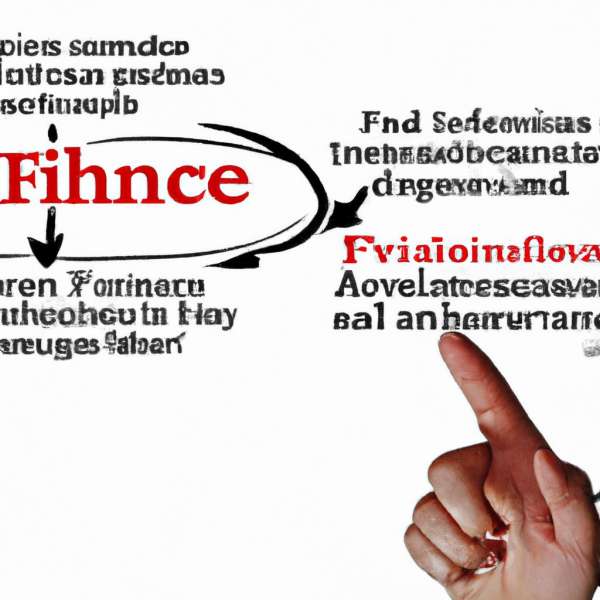Navigating the world of insurance can often feel like traversing a complex labyrinth, with each turn presenting new challenges and uncertainties. For many, the promise of coverage serves as a comforting safety net, a beacon of hope during times of crisis. However, what happens when that reliability falters? “Insurance bad faith” emerges as a disturbing reality for policyholders, leaving them grappling with delayed claims, insufficient payouts, or outright denials. This article aims to illuminate the path forward, offering practical strategies for individuals facing the unsettling experience of bad faith insurance practices. Whether you’re a first-time policyholder or a seasoned veteran of the insurance landscape, understanding your rights and options is essential. Join us as we explore effective ways to combat this issue and reclaim the peace of mind you deserve.
Understanding Insurance Bad Faith and Its Implications
Insurance bad faith occurs when an insurance company fails to uphold its end of a policy agreement, acting in a manner that is dishonest or unfair during the claims process. This can manifest through various actions that leave policyholders feeling neglected or defrauded. Understanding these actions is crucial for anyone navigating the often-complex world of insurance claims. Here are a few key indicators of bad faith:
- Unreasonable Delays: Prolonged waiting periods for claim approvals without justifiable reasons.
- Lowball Offers: Offers that are substantially less than what the claim is worth or the policyholder is entitled to.
- Failure to Investigate: Neglecting to thoroughly evaluate claims or failing to consider all relevant evidence.
- Pressure Tactics: Coercing the policyholder to accept a settlement quickly, often by implying they won’t receive any more help.
The implications of bad faith extend beyond mere frustration; they can have substantial consequences for both the policyholder and the insurance provider. For policyholders, accepting bad faith behavior can result in substantial financial loss and emotional distress. To counter this, it is important to document interactions with the insurance company meticulously, noting dates, names, and the nature of each exchange.
| Consequences of Bad Faith | Policyholder Actions |
|---|---|
| Financial Loss | Keep detailed records of expenses related to claims. |
| Emotional Distress | Consider consulting a mental health professional for support. |
| Legal Complications | Discuss your case with an attorney specializing in insurance claims. |
In the world of insurance, recognizing bad faith practices is vital for protecting one’s rights. Armed with knowledge and documentation, policyholders can take appropriate actions to seek redress. Engaging a legal expert can be particularly fruitful, as they can guide you through the complexities of pursuing a bad faith claim effectively.

Recognizing the Signs of Bad Faith Practices
Identifying untrustworthy behavior from an insurance company can save you time, stress, and potentially significant financial loss. Some common indications of bad faith practices include:
- Unreasonable Delays: When an insurance company takes an unusually long time to respond to a claim or decision, it may indicate an effort to evade responsibility.
- Inadequate Investigations: If the insurer fails to conduct a thorough investigation or ignores important evidence related to your claim, this could point to bad faith.
- Policy Violations: Not adhering to the terms outlined in your insurance policy can also be a red flag, especially if the adjustments made are arbitrary or unjustified.
- Insufficient Communication: A lack of clear and timely communication could signal an intention to frustrate the claims process.
Furthermore, consider the manner in which your claims are evaluated. Here’s a quick overview of practices that may characterize bad faith:
| Indicators of Bad Faith | Description |
|---|---|
| Excessive Denials | Frequent denial of reasonable claims without valid justification. |
| Manipulated Evidence | Deliberately twisting or omitting facts to support a denial. |
| Unjust Policy Changes | Implementing retroactive policy changes that impact coverage unfairly. |
Addressing these tendencies early on is crucial. Keener awareness of these signs can equip policyholders to take appropriate action when they sense that their insurer is not acting in good faith. Being proactive not only helps in protecting your rights but also ensures that you can pursue a fair resolution when conflicts arise.

Effective Strategies for Documenting Your Case
To navigate the complex landscape of insurance bad faith, meticulous documentation of your case is crucial. Begin by **keeping a detailed record** of all interactions with your insurance company. This includes phone calls, emails, and written communications. Each entry should note the date, time, parties involved, and a summary of the conversation. Maintaining these records can help you establish a pattern of bad faith practices.
Additionally, gather and organize all relevant documents that pertain to your claim. This can include:
- Insurance policy documents
- Claim forms and correspondence
- Medical records or repair estimates
- Photographs of damages or relevant evidence
- Expert opinions or testimonies if applicable
Consider using a **table** to track your communications and documentation effectively:
| Date | Contact Method | Contact Person | Summary of Interaction |
|---|---|---|---|
| MM/DD/YYYY | Phone | John Doe | Discussed status of claim; promised follow-up within 5 business days. |
| MM/DD/YYYY | Jane Smith | Requested additional documentation; response received. |
always ensure that you maintain copies of everything you send to your insurer. If they request further documentation, send it via certified mail. This offers you a direct proof of delivery, enhancing your case if disputes arise later. The diligence you exhibit in documenting your case significantly strengthens your position against bad faith practices.

Exploring Your Legal Options Against Bad Faith Insurers
When facing the frustration of dealing with an insurance company that may be acting in bad faith, it’s crucial to understand the legal avenues that can help you reclaim your rights. Bad faith occurs when an insurer fails to uphold its obligations under the policy, potentially jeopardizing your claim for benefits. If you suspect you’re up against an insurer acting in bad faith, consider the following legal options:
- Document Everything: Maintain detailed records of all communications with your insurer, including emails, phone calls, and letters. This evidence will be invaluable for any legal proceedings.
- Consult a Legal Professional: Engage with an attorney who specializes in insurance law. They can provide guidance tailored to your situation and help you navigate the complexities of your case.
- File a Complaint: You can file a complaint with your state’s insurance regulatory agency. This can prompt an investigation into the insurer’s practices, potentially leading to penalties for the company.
- Pursue a Bad Faith Lawsuit: If you have a strong case, your attorney may recommend filing a lawsuit against the insurer. Successful claims can result in compensation that goes beyond just the original claim amount, including damages for emotional distress and punitive damages.
Additionally, it’s beneficial to be aware of key indicators of bad faith insurance practices. The following table outlines common tactics used by bad faith insurers:
| Bad Faith Tactics | Description |
|---|---|
| Unreasonable Denials | Denying valid claims without sufficient justification or failing to investigate claims promptly. |
| Delayed Payments | Prolonging the claims process or payments without any valid reasons. |
| Misrepresentation | Using vague or misleading language about the policy’s terms to avoid coverage. |
| Failure to Communicate | Ignoring requests for information or failing to respond to inquiries in a timely manner. |
By becoming familiar with your rights and the tactics that insurers may employ, you can better prepare yourself to take action. Pursuing a legal remedy may be necessary to ensure that you receive the benefits you are entitled to under your insurance policy.
Final Thoughts
In navigating the complex landscape of insurance, the term “bad faith” can feel daunting and overwhelming. However, it’s crucial to remember that you are not alone in this battle. Armed with knowledge and a clear strategy, you can effectively confront insurance companies that fail to uphold their end of the bargain. Whether it’s documenting your interactions, seeking legal counsel, or advocating for your rights, taking action is the first step toward reclaiming your peace of mind.
As you move forward, stay vigilant, organized, and empowered. Each step you take is not just a counter to an unfair practice but a broader stand against an industry that sometimes prioritizes profit over the needs of its clients. Breaching the silence surrounding bad faith is essential – not only for your own benefit but for the many others who may be facing similar challenges.
In this journey, remember that persistence pays off. As you educate yourself and arm yourself with the tools discussed, you enhance not only your chance of a fair outcome but also contribute to a culture of accountability within the insurance realm. Continue to advocate for yourself and others, and together, we can foster a marketplace driven by integrity and trust.





